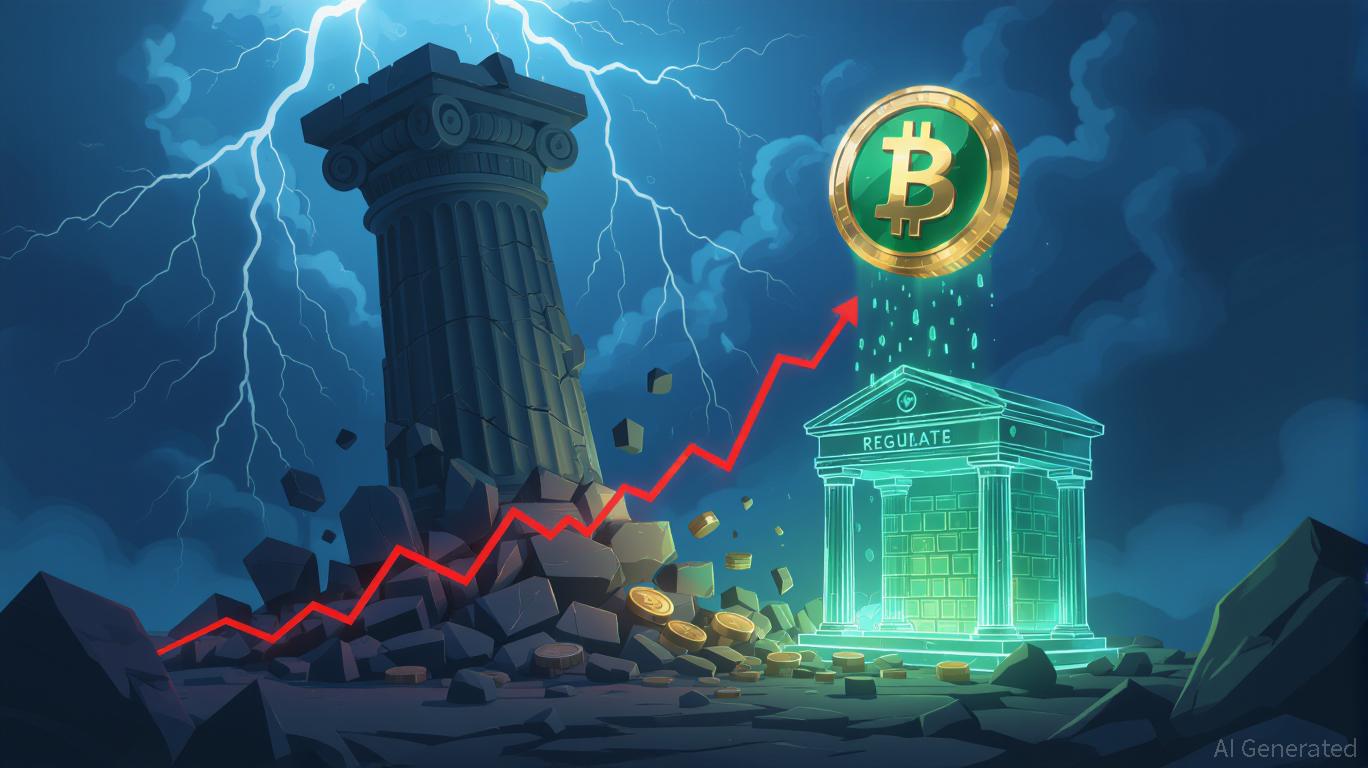CD Yields Reach 4.35% APY—However, Imminent Fed Rate Cuts Urge Savers to Move Quickly
- CDs offer 4.35% APY as of Oct. 24, 2025, but Fed rate cuts risk further declines, urging savers to act quickly. - Smaller banks and online institutions outperform major banks like Chase, offering higher rates due to lower overhead costs. - Fed's 2024-2025 rate cuts reduced federal funds to 4.00%-4.25%, driving down CD yields from 2024 peaks. - Investors balance term lengths and liquidity via strategies like CD laddering while monitoring Fed policy shifts. - Historical context shows current rates exceed e
Certificates of deposit (CDs) continue to attract investors looking for reliable returns, with leading rates reaching 4.35% APY as of October 24, 2025. Still, analysts warn that these attractive yields could decrease further as the Federal Reserve maintains its ongoing rate reductions, which started in September 2025. With the Fed expected to cut rates again in the near future, savers are encouraged to act quickly to lock in current offers, according to
The most competitive CD rate at present—4.35%—comes from Ivy Bank’s three-month CD. Fortune’s tracking shows that smaller regional and online banks are leading the market, often surpassing the rates offered by major institutions. Large banks like Chase, PNC, and U.S. Bank, which focus more on lending and credit card services, typically provide less attractive CD yields, prompting investors to seek better returns elsewhere, as reported by

Changes in CD rates have largely been driven by the Federal Reserve’s monetary policy. After aggressively increasing rates in 2022 and 2023 to fight inflation, the Fed shifted gears in 2024 and 2025. With three rate reductions in 2024 and another in September 2025, the federal funds rate dropped to a range of 4.00%–4.25%, which has led to lower CD yields from their 2024 highs, according to a Fortune article. With two more Fed meetings scheduled for October and November 2025, experts expect rates to fall further, especially if inflation continues to ease, as Fortune has highlighted.
Looking at the bigger picture, current CD rates remain strong compared to recent years. While 4.35% is much lower than the double-digit rates seen in the 1980s, it is a significant improvement over the sub-1% yields that were common in the early 2020s. By historical measures, today’s rates are still attractive, particularly for short-term CDs. The yield curve has flattened, with 12-month CDs now offering the highest average APY, reflecting expectations that rates will drop soon, according to
Investors need to weigh factors like term length, APY, and access to funds. Short-term CDs provide more flexibility but generally pay less, while longer terms can lock in higher rates but reduce liquidity. Many savers use a CD laddering approach—dividing their investment among CDs with different maturities—to balance returns and access. For example, splitting $3,000 into 1-year, 2-year, and 3-year CDs gives annual access to part of the funds while still benefiting from higher long-term rates, as Fortune points out.
It’s also important for depositors to look beyond just the APY. Factors such as minimum deposit amounts, penalties for early withdrawal, and deposit insurance should be considered. Online banks may offer better rates but sometimes require higher minimum balances, while local banks might provide more personalized service. Savers should compare offerings from various institutions and take advantage of promotional rates, which can increase APYs for new customers who meet certain requirements, the Yahoo Finance roundup advises.
The evolving CD market highlights the need for careful financial planning. With the Fed’s future actions still uncertain, investors should keep up with economic news and central bank decisions. For now, there is still an opportunity to lock in favorable rates, but that window is closing, as Fortune notes.
Disclaimer: The content of this article solely reflects the author's opinion and does not represent the platform in any capacity. This article is not intended to serve as a reference for making investment decisions.
You may also like
The PENGU USDT Sell Alert: Is This a Turning Point for Stablecoin Approaches?
- PENGU/USDT's 2025 collapse triggered a $128M liquidity shortfall, exposing algorithmic stablecoin fragility and accelerating market shift to regulated alternatives. - USDC's market cap surged to $77.6B by 2025, while MiCA-compliant euro-stablecoins gained $680M in cross-border adoption amid regulatory clarity. - DeFi protocols adopted oracle validation and reserve-backed models post-PENGU, reducing exploit losses by 90% since 2020 through institutional-grade security upgrades. - Regulators now prioritize

Emerging Prospects in EdTech and AI-Powered Learning Systems: Ways Educational Institutions Are Transforming Programs and Enhancing Student Achievement
- AI is transforming education by reshaping curricula, enhancing student engagement, and optimizing institutional efficiency. - Universities like Florida and ASU integrate AI literacy across disciplines, offering microcredentials and fostering innovation. - AI tools like Georgia Tech’s Jill Watson and Sydney’s Smart Sparrow boost performance and engagement through personalized learning. - AI streamlines administrative tasks but faces challenges like ethical misuse and skill gaps, requiring structured train

Anthropological Perspectives on Technology and Their Impact on Education and Workforce Preparedness for the Future
- Interdisciplinary STEM/STEAM education integrates technology tools like AI and VR to bridge theory and real-world skills, driven by $163B global edtech growth. - U.S. faces 411,500 STEM teacher shortages and 28% female workforce representation gaps, prompting equity-focused programs like Girls Who Code. - STEM occupations earn $103K median wages (vs. $48K non-STEM), with 10.4% job growth projected through 2033, driving investor opportunities in edtech and workforce alignment. - Strategic investments in t

The Revival of Educational Technology in Higher Education After the Pandemic
- Global EdTech market grows to $7.3T by 2025, driven by hybrid learning and AI/AR/VR adoption in higher education. - Institutions like MIT and Harvard integrate AI across disciplines, boosting enrollment and workforce alignment through $350M-$500M investments. - EdTech platforms enabling personalized learning and immersive experiences see rising demand, with 45% annual growth in AI-related programs since 2020. - Undervalued EdTech stocks offer investment opportunities as $16B+ VC funding accelerates innov
